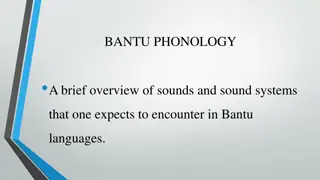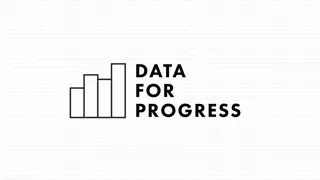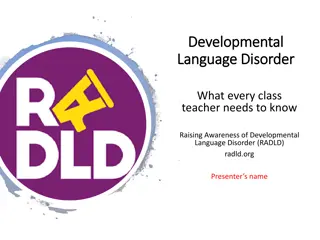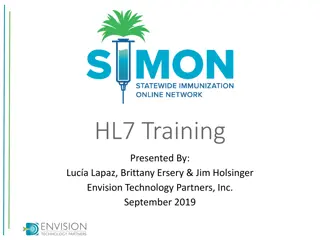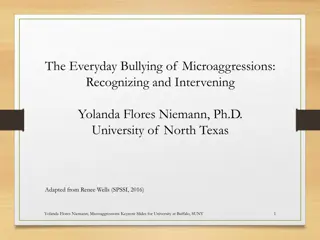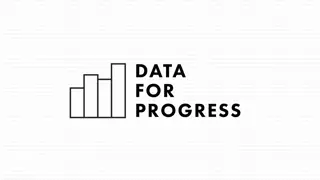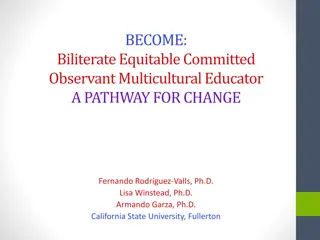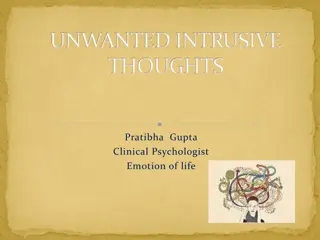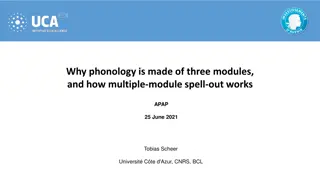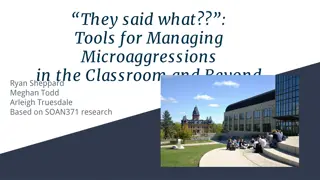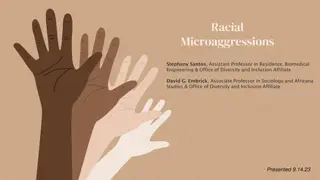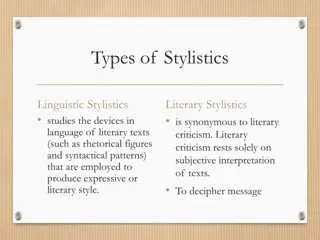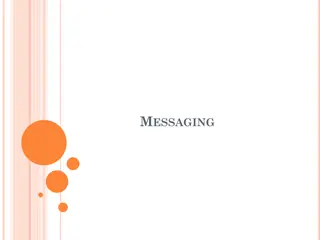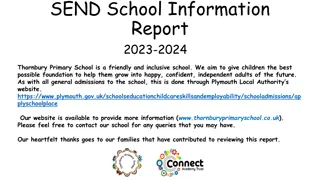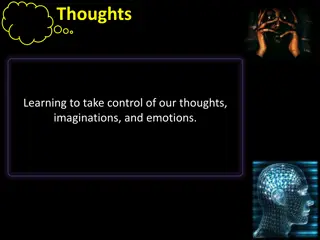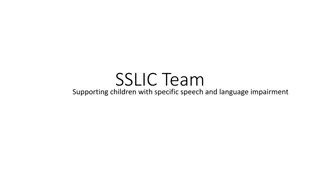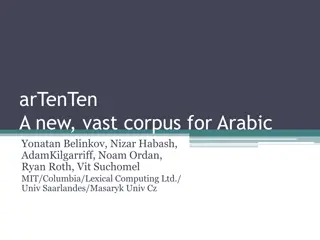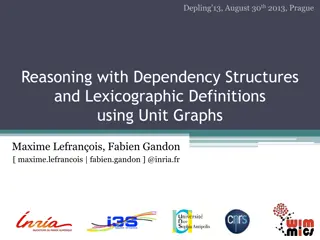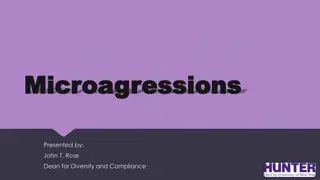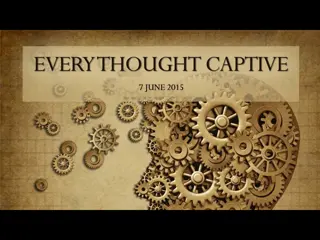Linguistic Microaggressions in Messaging about DLD: Thoughts and Suggestions
Linguistic microaggressions in the discourse surrounding Developmental Language Disorder (DLD) can perpetuate negative stereotypes and harm individuals. This content discusses the concept of linguistic microaggressions, explores the ambiguity in messaging about DLD, and highlights the importance of clear, affirming communication in supporting individuals with language difficulties. Suggestions for improving messaging and raising awareness are presented with the aim of fostering a more inclusive and understanding environment.
Uploaded on Sep 11, 2024 | 3 Views
Download Presentation

Please find below an Image/Link to download the presentation.
The content on the website is provided AS IS for your information and personal use only. It may not be sold, licensed, or shared on other websites without obtaining consent from the author. Download presentation by click this link. If you encounter any issues during the download, it is possible that the publisher has removed the file from their server.
E N D
Presentation Transcript
Messaging about DLD Some Thoughts and Suggestions Oetting, 2021, with special thanks to Erin Bonfanti and the students in COMD 7750, Spring, 2020
What are Linguistic Microaggressions? Brief, everyday exchanges that send negative messages to individuals because of the way they talk. Microaggression deals with a class of utterances or sentences that, given the context of their production, are ambiguous: they are potentially insulting or invalidating, but the insult is plausibly deniable. Unambiguously Negative: Your outfit looks dumb. Ambiguous: Your outfit looks [pause] so interesting. Intent vs. Effect Taylor Jones, https://www.languagejones.com/blog-1/2016/9/8/oi6379payz9mb4diadulndc244gq1s
Do we have ambiguous messaging about DLD? If we do, we may be unintentionally engaging in linguistic microaggressions. If we do, we should work to change our messaging. The next two infographics were created as supplements to a recent article in the ASHA Leader. The infographics were cut for space. I m offering these infographics to spark dialogue. I d love to learn more about ways to improve my messaging. Please share tips! https://leader.pubs.asha.org/do/10.1044/leader.FMP.25112020.12/full/
Lets look at this first infographic. It was created using a Dialect vs. Disorder Framework Pretty standard content, eh? Now let s think about this content through a microaggression lens.
Look for ambiguity in the messaging. If our messaging is ambiguous, we may be engaging in microaggressions.
Ambiguous Some nonmainstream dialect speakers may also struggle with language and school for different reasons. They are invisible in this paragraph. DLD affects children's abilities to learn and use language to communicate with others and perform well in school. DLD is not caused by a hearing impairment, intellectual disability, autism, or other conditions. OR Dialects are treated as an Other condition, along with various childhood disorders. Neither interpretation is positive or affirming. Young children with DLD often rely on generic words and simple sentence structure. A child with DLD says: He carry it and She go . Other children say: The boy carried the ball and Mia goes to the store . Examples may be relevant for mainstream dialects of English, but they are not relevant for all dialects of English when presented without more context.
Ambiguous Dialect differences are not DLD. Some children speak a dialect that differs from school English. Some of these dialects are African American English, Southern White English, and Spanish-Influenced English. Well, that s great to know but what does DLD look like in these other dialects? Dialects are natural differences in how groups of speakers use language. A child who speaks a dialect that differs from school English presents a difference and not a disorder. Again, good to know but what does DLD look like in these other dialects? Does our field care about DLD within dialects other than mainstream English?
From a microaggression lens, there is ambiguity in what seemed like a pretty good infographic.
Lets look at a second infographic. Same content, but it is much more inclusive and unambiguous. It was written from a Disorder within Dialects Framework
Unambiguous Across all dialects of English and all languages, some children struggle to learn language and perform well in school compared to their siblings, cousins, and friends; these children may have DLD. DLD is not caused by a hearing impairment, intellectual disability, autism, or other conditions. All dialects and languages are included. Reference is to children in the same dialect/language community. Dialect Universal Markers: Some clinical markers of DLD are found in all dialects of English and all languages, including a reliance on generic words and simple sentence structure. Sends a message that SLPs work with children who present with DLD within ALL dialects and ALL languages. Dialect Specific Markers: Some clinical markers of DLD are specific to a child s dialect and language. SLP services are customized for a child s family, dialect, and language.
Final Product! Where else might we revise our messaging about Childhood DLD?


